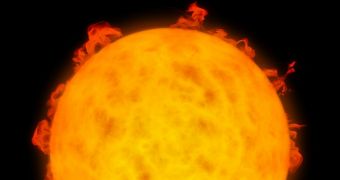Astronomers generally look far outwards into the cosmos, using increasingly powerful complex tools to peek into the early days of our universe. But they don't always need to look too far, ancient relics of days long past linger in our cosmic backyard.
A team of astronomers has identified a nearby star that is almost as old as the universe, HD 140283 is only 190 light-years away and is possibly one of the oldest stars discovered so far.
In fact, astronomers calculated that the age of the star is 14.46 billion years, which is significantly older than our current best estimate for the age of the universe, 13.77 billion years.
There is a margin of error of 800 million years on the star's age, which puts it within the boundaries of the Big Bang, just barely. HD 140283 can't be younger than 13.66 billion years, if the calculations are correct.
The star is deficient in metals, a trademark of the early stars. Heavier elements were created in supernova explosions, meaning they weren't there when the first stars were formed. This particular old star has only 1 percent the iron content of our sun, for example.
Stars like HD 140283 are important because they provide a constraint on the age of the universe, independent of what the current popular theory may be.
The Big Bang theory is the best we've got to explain the origins of the universe, but it's certainly not going to be last.
Measuring the age of a star puts limits on how young the universe can be, regardless of the theory used, the universe couldn't be 12 billion years old, for example, since, as best as we can tell, stars existed before that, stars which still shine today.

 14 DAY TRIAL //
14 DAY TRIAL //